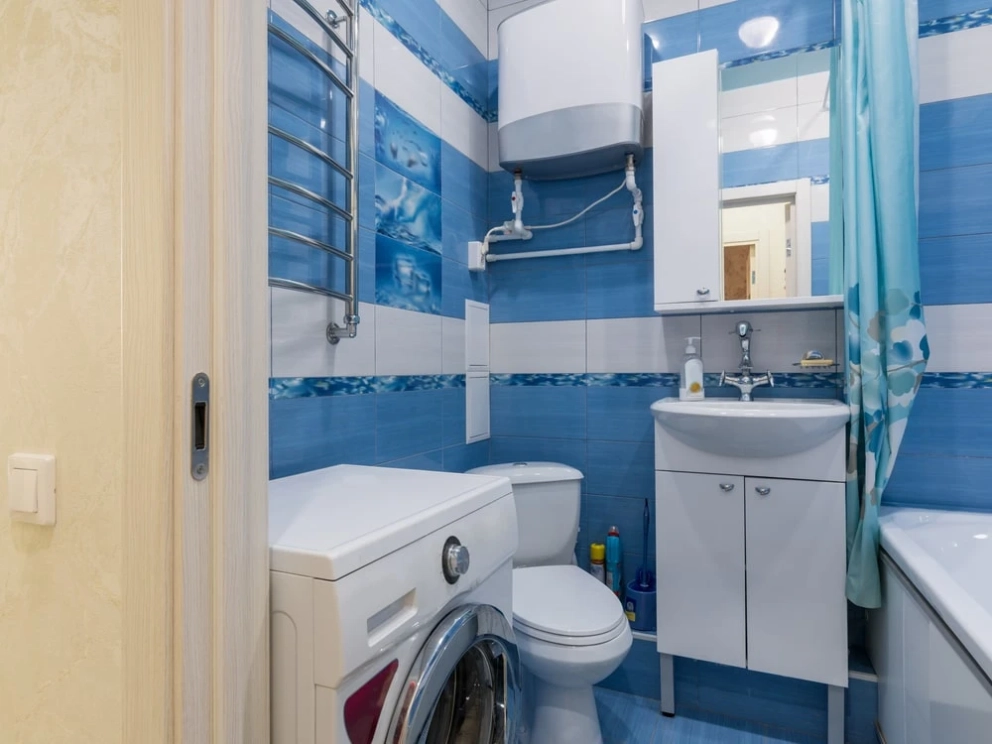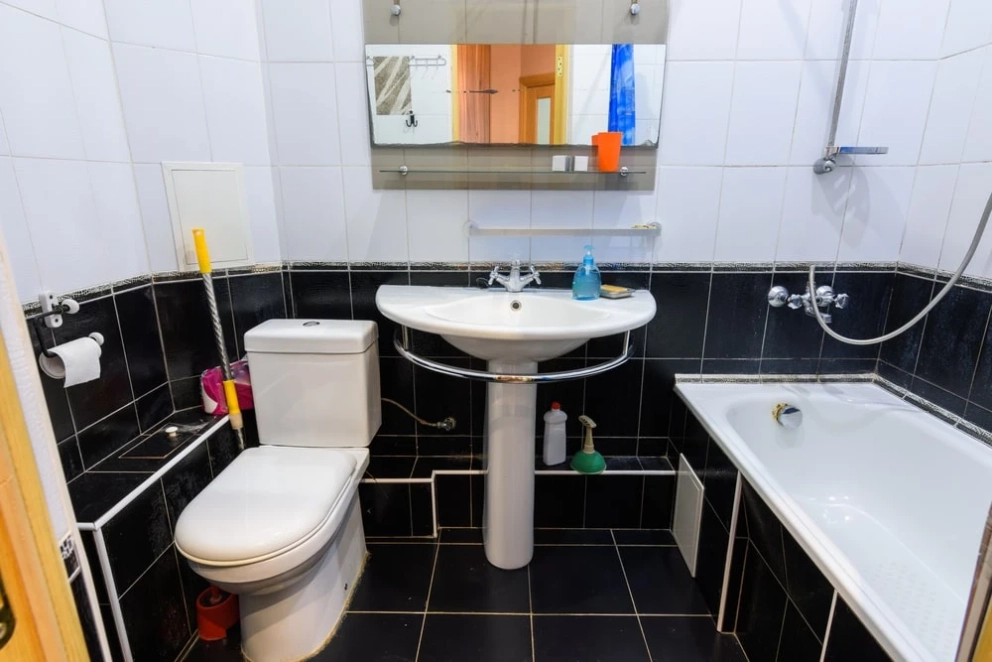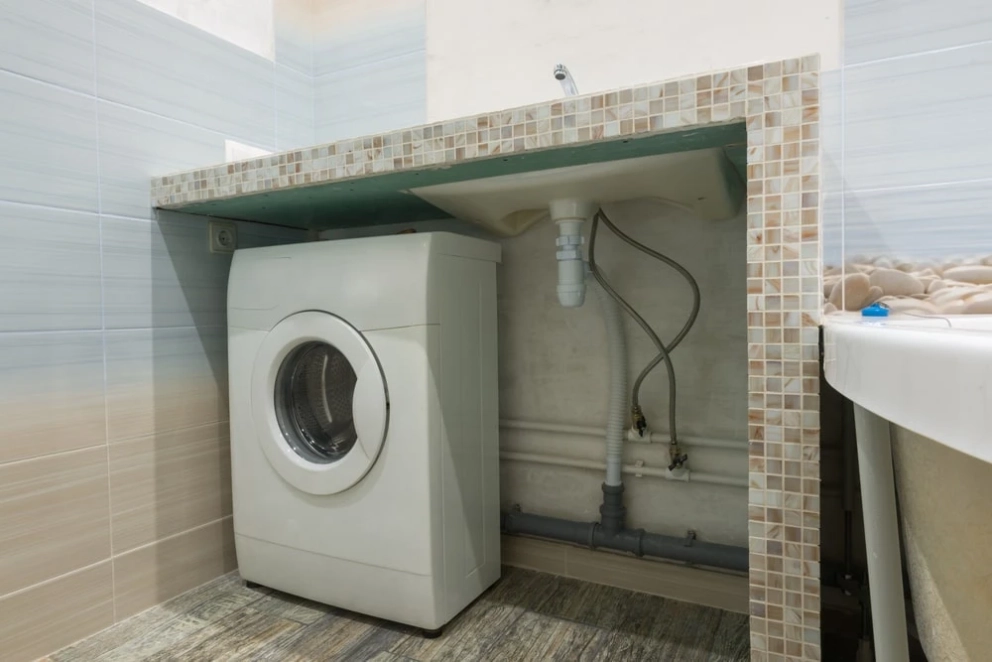Top ideas on how to hide pipes in a bathroom

The bathroom is considered as the smallest room in a house. However, despite its size, designing it can be just as challenging as designing the rest of the spaces in your home. There are a lot of things to consider when designing a bathroom, one of which is your vanity pipes. If you want to have an aesthetic bathroom sink, hiding under-bathroom sink plumbing is one of the challenges you’re going to face. Exposed pipes can ruin your bathroom’s overall design and let’s admit it, exposed plumbing is an eyesore.
So, if you are planning to renovate your bathroom or looking for ways to hide those unsightly pipes, you’ve come to the right place. In this blog, we will walk you through several practical pipe decoration ideas and ways to hide your bathroom pipes properly to help you achieve that seamless, modern, and minimalist bathroom interior design.
Conceal plumbing options
Let’s say you’ve just moved into your dream home, the bathroom is pristine, but those unsightly exposed pipes are putting a damper on your décor dreams. Sounds like a problem that most homeowners face nowadays. You probably already asked yourself how to hide sink pipes and maybe did a round of research on pipe-covering ideas.
There are numerous ideas to hide pipes under the bathroom sink. But the real challenge is finding which one will work best for your own bathroom. On Cut2Size we have a slew of clever ideas on how to hide pipes under the bathroom sink and provide you with practical information so you can make an informed decision and choose which solution will work for you. Let’s get right into it!
Faux wall
The faux wall technique is like magic for hiding pipes in the bathroom that refuse to blend into the background. By creating a false wall in front of the pipes, you can maintain easy access while effortlessly concealing exposed plumbing in the bathroom from view. Choose to conceal pipes in the wall by bathroom water line covers like beadboard, shiplap, or even faux brick to add character to your bathroom.
One of the key advantages of a faux wall as a cover for pipes in the bathroom is its ability to seamlessly integrate with the existing decor. It provides a blank canvas for creative expression, allowing individuals to personalize their bathroom spaces while effectively covering the unsightly pipes. This flexibility ensures that the faux wall not only hides the plumbing but also enhances the overall visual appeal of the room. Remember to create an access panel or removable section for any future maintenance needs, ensuring that functionality remains as key as aesthetics in this pipe-concealing venture.
Decorative screens or valance
Turn your bathroom into a work of art by using decorative screens or valances as a cover for pipes under the sink to mask those exposed plumbing under sink eyesores. Elegant and functional, pipe covers for the bathroom offer a quick fix to keep the mystery alive behind an intricate facade. Consider under sink pipe covers decorative such as laser-cut wooden screens, bamboo blinds, or fabric valances that complement your bathroom's theme.
Beyond their decorative function, these pipe coverings for under the bathroom sink also serve a practical purpose. Decorative screens and valances maintain accessibility to the pipes, allowing for easy maintenance or repairs when necessary. Unlike some permanent concealment options, using decorative screens or valance to hide bathroom sink pipes strikes a balance between style and functionality. The best part? They're easily customizable and can be changed with the seasons or your ever-evolving style.

Hiding pipes in a vanity cabinet
Why not let your bathroom vanity do double duty? A vanity cabinet provides a built-in solution that seamlessly integrates with the overall design of the bathroom. By choosing a vanity to hide pipes under the bathroom sink with a solid front panel, homeowners can effortlessly cover pipes under the sink, creating a cohesive and polished appearance. This type of plumbing covering under the sink allows the vanity to serve a dual purpose – not only as a stylish cover but also as valuable storage space.
Vanity cabinets come in a variety of styles, finishes, and sizes, allowing homeowners to choose one that complements their bathroom decor. Whether you prefer a sleek and modern look or a more traditional aesthetic, there are plenty of customization options to suit individual preferences and design themes.
Pipe covers or wraps
For a quick and budget-friendly fix, cover under sink pipes with wraps. They work as decorative pipe boxing used to hide exposed sink plumbing. These pre-made under-sink plumbing covers, often made from materials like PVC or foam, can be easily installed to wrap around exposed pipes. Available in various styles and finishes, you can choose an underneath bathroom sink cover that complements your bathroom theme, making those pipes disappear into the background effortlessly. Installation is a breeze, and they're easily removable if you ever decide to change things up.
Pedestal sink cover-up
Pedestal sinks are a classic and elegant type of solution for covering pipes but they often come with the drawback of exposed plumbing. Turn this challenge into an opportunity by covering exposed pipes with a stylish pedestal sink skirt or decorative panel. This simple yet effective solution not only conceals the plumbing but also adds a touch of softness and sophistication to your bathroom. Choose a material that complements your decor and let it turn your pedestal sink into a statement piece.
Toilet and shower pipes hiding
When revamping your bathroom's aesthetic, it's crucial to address the often-overlooked aspects like exposed plumbing that can disrupt the overall design. Consider incorporating a decorative toilet pipe cover to seamlessly blend the pipes behind the toilet with the rest of your decor. These covers come in various styles and materials, allowing you to choose one that complements your bathroom's theme.
Similarly, for a sleek and polished look in your shower area, invest in good plumbing and tiling to discreetly conceal the shower plumbing pipes within the wall. To maintain functionality while concealing unsightly elements, explore creative ideas such as a plumbing access panel designed to seamlessly blend with the surrounding wall.
Additionally, for those looking to tackle heating pipes, explore diverse heating pipe cover ideas that not only hide the pipes but also add a touch of style to your space. By strategically implementing these covers, you can achieve a harmonious and visually pleasing bathroom while keeping the practical aspects of plumbing accessible when needed.
Bathroom sink plumbing

Understanding the intricacies of different plumbing bathroom sink setups is crucial for achieving a harmonious blend of functionality and aesthetics. In this in-depth section, we'll unravel the types of plumbing under bathroom sinks shedding light on how to seamlessly integrate piping under bathroom sinks, how to hide exposed bathroom sink plumbing, and give you more information on plumbing for vanity sinks.
Double vanity plumbing
Plumbing for a double sink vanity is gaining popularity, especially in larger bathrooms or shared spaces. This setup involves transforming a single vanity into a double vanity, creating a seamless transition. The plumbing for double vanities typically includes a shared drain pipe, facilitating efficient water drainage from both sinks. This approach allows for an organized and sophisticated bathroom layout. Each basin has dedicated plumbing, ensuring individual control over hot and cold water temperatures, a crucial aspect when transitioning from single vanity to double vanity plumbing.
When considering plumbing double vanity configurations, it is essential to select quality materials and hire a professional plumber to prevent leaks and ensure the longevity of the plumbing system. Plumbing double vanity setups not only add practicality to the bathroom but also contribute to a sleek and organized aesthetic. Transforming from a single to double vanity plumbing is a smart choice for those seeking enhanced convenience and personal space in their bathroom.
Wall-hung vanity plumbing
Floating vanity with floor plumbing is a contemporary design choice that requires careful consideration during the planning phase. Wall-hung vanity pipe covers are known for their space-saving benefits and sleek appearance. When opting for these ideas to hide pipes on the wall, it's essential to address the challenge of concealing plumbing elements effectively. One solution is the use of vanity pipe covers, which not only serve a practical purpose but also contribute to the overall aesthetic of the bathroom.
There is a certain difference in the floor-mounted vs. wall-hung vanity approach. Unlike traditional floor-mounted vanities, wall-hung options expose the plumbing, creating a need for innovative ways to hide pipes under wall-mounted sinks. There are various creative ideas to tackle this issue, such as installing decorative panels or utilizing custom-made cabinetry with built-in pipe concealment. These solutions not only cover pipes on the wall but also add a touch of sophistication to the bathroom design.
Plumbing through the side of a vanity
Opting for a bathroom vanity with side plumbing provides a versatile solution adaptable to various bathroom layouts and design preferences. This vanity sink plumbing configuration involves strategically placing plumbing fixtures, including sink drain and water supply lines, through the side of the vanity cabinet. Plumbing double vanity solutions can take inspiration from this design, striking a balance between modern aesthetics and classic appeal. This setup allows for easy access to plumbing components while maintaining a clean and polished look in the bathroom.
Bathroom vanity plumbing potential issues

While planning a bathroom renovation, understanding potential plumbing issues associated with the vanity is crucial for a smooth and successful project. From the intricacies of cutting the vanity for plumbing to the challenges of concealing piping, homeowners should be aware of these concerns to ensure a functional and aesthetically pleasing bathroom. In this guide, we'll delve into common bathroom vanity plumbing issues and provide detailed explanations with suggested solutions.
- Cutting vanity for plumbing. One of the primary challenges during a bathroom renovation is cutting the vanity for plumbing. This issue arises when the pre-existing plumbing configuration does not align with the chosen vanity's dimensions. Incorrectly cutting the vanity can lead to structural instability and compromise the overall aesthetics. To address this concern, it is crucial to consult with a professional plumber to assess the existing plumbing layout and determine the precise cuts required. Additionally, opting for vanities with adjustable shelves or customizable configurations can help accommodate unique plumbing setups without compromising the integrity of the vanity.
- Moving plumbing to fit vanity. In some cases, the chosen vanity may not align with the existing plumbing, necessitating the moving of plumbing to fit the vanity. This issue can be complex, involving adjustments to both the water supply lines and drain pipes. It's imperative to involve a licensed plumber to evaluate the feasibility of moving the plumbing and provide expert guidance. Moving plumbing to fit the vanity may involve rerouting pipes within the walls or even the floor, requiring careful planning and coordination. Homeowners should factor in the potential cost and timeline implications associated with such adjustments to ensure seamless integration of the vanity into the bathroom space.
- Plumbing under vanity sink. Placing plumbing under the vanity sink is a common configuration, but it can lead to potential issues, especially when it comes to maintenance and repairs. With vanity drawers around plumbing, leaks or clogs may go unnoticed until significant damage occurs. Regular inspections and proactive maintenance are essential to mitigate these concerns. Homeowners can also consider putting liners in the vanity to protect drawers from moisture damage. Additionally, using quality materials for plumbing components can contribute to the longevity and durability of the system.
- Conceal piping. Concealing piping is a crucial consideration for a polished and visually appealing bathroom. Exposed pipes can detract from the overall design, requiring homeowners to explore creative solutions to conceal piping effectively. This may involve incorporating decorative covers, custom-built cabinetry, or false walls to hide plumbing elements. When concealing piping, it's essential to ensure accessibility for future maintenance needs, striking a balance between aesthetics and functionality.
A few things to consider when hiding pipes in the bathroom

This table provides a more generalized approach, helping you consider various practical aspects when deciding how to hide pipes in your bathroom. It will allow you to weigh factors such as space, accessibility, budget, design compatibility, installation effort, versatility, and durability to make an informed decision based on your specific circumstances.
| Consideration | Description |
| Space constraints | Evaluate the available space for concealment options |
| Access for maintenance | Ensure easy access for potential future repairs |
| Budget | Consider the cost implications of the chosen method |
| Design compatibility | Assess how well the hiding method aligns with your décor. |
| Installation effort | Determine the level of effort required for installation |
| Versatility | Consider if the method suits various bathroom layouts. |
| Durability | Evaluate the long-term effectiveness of the chosen option. |


